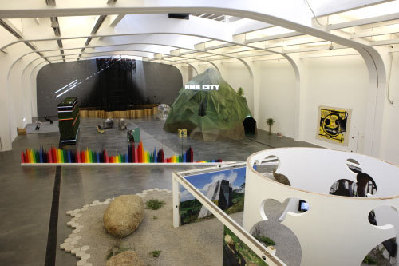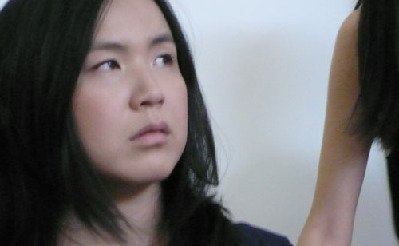70s artists in China step onto stage
A group of artists born in the 1970s are steadily on the rise, gradually emerging as the main strength of Chinese contemporary art, with the generation of Political Pop artists no longer the only representatives of the genre on the world art stage.
"They are a very different new generation of Chinese art, with both mediums and subjects adopted varying from celebrities like Wang Guangyi and Zhang Xiaogang," commented art critic Wang Wei. "They are no longer as enthusiastic at being ironic toward politics as their elder generation were."
|
 |
Growing up in a fast-developing society, usually with Western impacts in every aspect of life, Chinese artists born in the 1970s tend to reflect the world with their own unique artistic styles and viewpoints.
While capturing a commercialized Chinese society in direct ways such as making installations with coke bottles, Chinese yuan and US dollars, subjects involving personal life affairs including love, marriage, violence and sex are also largely reflected in their works. Sometimes they even turn to reflecting the natural world to search for peace, according to Wang.
Born in 1978, female artist Cao Fei is one of the emerging artists of this generation. Different from her father, a sculptor who created works of political figures such as Mao Zedong, Zhou Enlai and Lei Feng, Cao Fei doesn't have any inkling toward politics and likes reflecting pop culture in her video and installation works.
"I just don't like reflecting political-related things, that is something not related to my life," she explained. "What I care about is things happening around us and what moves me deepest in my heart."
Her video installation Nu, two giant tent-like cabins with videos playing inside, is on display at Ullens Center for Contemporary Art (UCCA) in Beijing. The two cabins are in the form of folk houses of the Nujiang River area in Yunnan Province, where Cao and her friends traveled and took videos four years ago.
"The local people, their lives in tranquility as well as the scenery just moved me so much that I will never forget there is another completely different way of life in our world, a way different from the commercialized city life we are living," Cao said at the opening of the exhibition.
Aside from Cao's works, the group show Roundtrip: Beijing-New York, also at UCCA presents other emerging artists born in the 1970s including Li Hui, Li Songsong and Yang Fudong.
The exhibition also shows artists from New York, including Terence Koh, Ryan McGinley, Matthew Day Jackson and Barnaby Furnas, all as young and energetic as their Chinese counterparts, with the aim to "put a cultural comparison, especially of those emerging artists of the same generation, between the two big cities," explained UCCA director Jerome Sans.
"There are many similarities in terms of works by the emerging young artists from both cities, which indicates that the eyesights of Chinese young artists are becoming more internationalized," Sans said last Sunday at a press conference.
"Those young artists from the two cities share the same subjects, such as fear, dream and illusion," he added. "You can't tell a certain piece is from a Chinese artist or American, without checking the card below."
|
 Artist Cao Fei |
In recent years a number of group and solo exhibitions have been being held in museums and galleries around the world, presenting a wide range of Chinese artists of the 1970s generation, with experts and critics concurring that the international focus on Chinese contemporary art is converting to these young, energetic 30 year olds.
"Believe or not, they are faithful recorders of contemporary Chinese life, where magic happens every day as the country emerges as one of the powerful economies after it went through a long planned-economy era," Wang added.
Famous art critic Zhu Qi always speaks highly of young artists born in the 1970s, considering that they will be the new force of Chinese art in the near future as their art breaks the routine of political viewpoints that were adopted by many of their predecessors who are already internationally famous.
He said that while compared with artists born in the 1950s and early 1960s, who usually take memories of the Cultural Revolution (1966-76) as their artistic inspiration, these much younger artists born in the 1970s pay more attention to current social problems and are the leading force of future art trends in China.
"Politic subjects such as the Cultural Revolution used to play a very important role in Chinese contemporary art, but it's time to make some changes," Zhu commented.
Younger artists commonly pay little attention to such history. Instead, they are more likely to focus on what experiences they are going through. While some of them embrace the commercialized world, others tend to doubt it, drawing attention to social problems such as environmental protection and materialism with their works.
Aside from the subject matter, mediums adopted by these artists are also much wider and more varied than before. Not only oil painting, installation and sculpture are seeing extended application, many artists are using video and multimedia in their works. "Materials are often of the same importance as the subjects you adopt in your artistic creation," artist Cao commented. "We choose the media which we like the most and make use of it as best as we can."


















